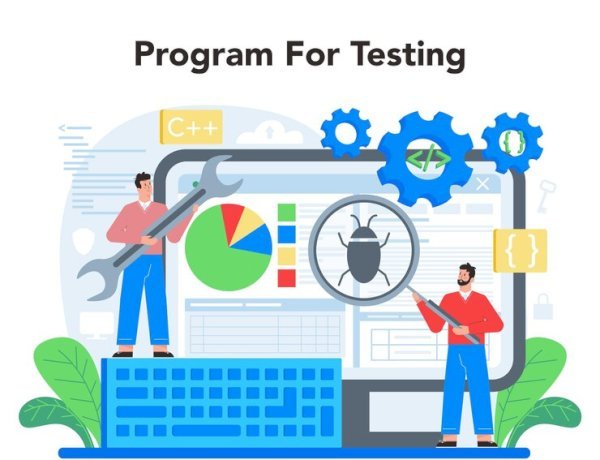What Is Granular Recovery Technology? Benefits, Use Cases & How It Works in 2025
Discover what granular recovery technology is, how it works in 2025, and why it’s essential for fast, item-level backup. Learn about its tools, benefits, AI trends, and cost-saving use cases.

In 2025, Granular Recovery Technology (GRT) is becoming a vital part of modern data protection strategies. With cyberattacks, accidental deletions, and compliance regulations on the rise, businesses need precision—not just power—in their backup systems. GRT allows organizations to recover specific files, folders, emails, or database objects from backups without restoring entire systems. This means faster recovery, minimal downtime, and maximum control.
This updated guide explores what granular recovery technology is, how it works, where it’s used, and the top tools leveraging it in 2025.
What Is Granular Recovery Technology?

Granular Recovery Technology refers to the ability to restore individual items—such as a Word file, one email, or a database record—from a backup, instead of restoring the entire system or application.
Example: If a finance team member accidentally deletes a quarterly report spreadsheet, IT can recover just that file from last night’s backup—without disrupting the rest of the system.
GRT is commonly used in:
-
Virtual machines (VMs) like VMware, Hyper-V
-
Email systems (e.g., Outlook 365, Gmail)
-
SaaS applications (SharePoint, OneDrive, Google Drive)
-
Databases (SQL Server, Oracle)
-
CRMs like Salesforce or ERPs like SAP
How Granular Recovery Technology Works in 2025

Unlike traditional recovery—which requires restoring a full system image—GRT uses smart indexing and snapshot-based technology to pinpoint specific objects within the backup.
Process Breakdown:
-
Metadata Indexing: Catalogs individual files and application objects.
-
Block-Level Snapshots: Enables fast, efficient storage access.
-
Searchable Interface: Admins use UI or API to retrieve specific items.
-
Application Awareness: Systems recognize platforms like Exchange or SQL for context-specific restores.
New in 2025: Kubernetes-native backups now support granular recovery of specific pods, secrets, or volume snapshots via open-source plugins and cloud provider APIs.
Key Benefits of Granular Recovery Technology in 2025

With the rise in remote work and cybersecurity threats, GRT is essential for:
-
Fast Recovery: Restore in seconds, not hours.
-
Less Downtime: Critical in industries like healthcare and finance.
-
Smart Storage Use: Retrieve only what’s needed.
-
Regulatory Compliance: Easily respond to GDPR, HIPAA, CCPA requests.
-
Enhanced Access Control: Role-based restore rights using RBAC.
-
AES-256 Encryption: Ensures secure recovery of sensitive data.
Read Also: Wireless Data Transfer Technologies: Types, Uses, and Future Trends
Top Use Cases in 2025

| Use Case | Description |
|---|---|
| Human Error Fixes | Restore a single folder or file deleted accidentally. |
| Email Recovery | Retrieve one message or attachment from Outlook 365 or Gmail. |
| Database Table Restore | Fix corrupted data without rolling back full databases. |
| Cloud SaaS Restoration | Restore SharePoint lists, Teams chats, or Google Docs. |
| Legal & Compliance Requests | Respond to legal inquiries with specific data extraction. |
Granular vs Full Recovery: 2025 Comparison
| Feature | Full Recovery | Granular Recovery |
|---|---|---|
| Recovery Time | Long (hours) | Fast (seconds-minutes) |
| System Downtime | High | Minimal |
| Scope | Entire environment | Specific item |
| Best Use | Full outage or ransomware | Day-to-day data loss |
| Cost Efficiency | Less efficient | High ROI for IT teams |
Tools Supporting Granular Recovery in 2025
| Tool | Feature |
|---|---|
| Veeam v12.1 | Exchange/VM file-level restore |
| Acronis Cyber Protect | Malware filtering + item recovery |
| Rubrik Radar | AI-driven anomaly detection and GRT |
| Commvault | Full-stack enterprise GRT |
| Druva inSync | Google Workspace and 365 support |
| Nakivo | Budget-friendly GRT with remote access |
| Microsoft 365 Backup Center | Built-in SharePoint and OneDrive recovery |
| Google Vault | Email/chat/file retention and GRT |
Why Businesses Can’t Ignore GRT in 2025

The cost of downtime in 2025 averages $9,000 per minute, according to IBM’s Cost of a Data Breach Report 2025. With rising cybersecurity risks, GRT has become a default requirement for:
-
Zero Trust Architectures: GRT solutions now integrate RBAC and MFA during recovery.
-
Compliance: Immediate access to specific user data simplifies audits.
-
Business Continuity: No need for a full rollback if one file goes missing.
-
User Empowerment: Employees can self-recover data in some platforms.
Real Insight: A San Francisco law firm saved 18 hours of downtime by restoring only one corrupted case file via Rubrik Radar’s AI-triggered GRT.
Future Trends in Granular Recovery (2025 & Beyond)

-
AI-Powered Predictive Restore: Tools like Rubrik Radar now use machine learning to suggest which files users are most likely to restore based on behavior and usage history.
-
Self-Service GRT: Portals are being embedded into collaboration apps like Microsoft Teams.
-
Immutable Storage: More backups are now stored in tamper-proof, WORM-protected environments to support ransomware recovery.
-
API-First Recovery Workflows: Recovery pipelines can now be scripted and automated in DevOps environments.
Conclusion
Granular Recovery Technology is no longer a luxury—it's a necessity for any modern IT or DevOps team. With rising cyber threats, remote operations, and regulatory audits, being able to restore only what you need, exactly when you need it, is a critical capability in 2025.
Whether you're a CIO, system administrator, or business owner, investing in a GRT-enabled backup solution is a smart move that ensures resilience, security, and peace of mind.
Frequently Asked Questions
Q1: Can I recover files from a virtual machine without restoring the whole VM?
Yes. Most backup platforms allow file-level recovery from VM snapshots.
Q2: What if my backup’s metadata is lost or corrupted?
Enterprise-grade tools offer dual-indexing or cloud-synced indexes for rebuild.
Q3: Is GRT more secure than traditional recovery?
Yes, GRT tools in 2025 use AES-256 encryption, audit logs, and role-based controls.
Q4: Can I use granular recovery in AWS or Azure?
Yes, tools like Commvault, Druva, and NAKIVO offer cloud-native GRT support.
Q5: How does GRT compare in cost vs. traditional recovery methods?
While GRT-ready tools may have higher upfront licensing, the savings in downtime, labor, and compliance penalties result in a much higher ROI over time.




























